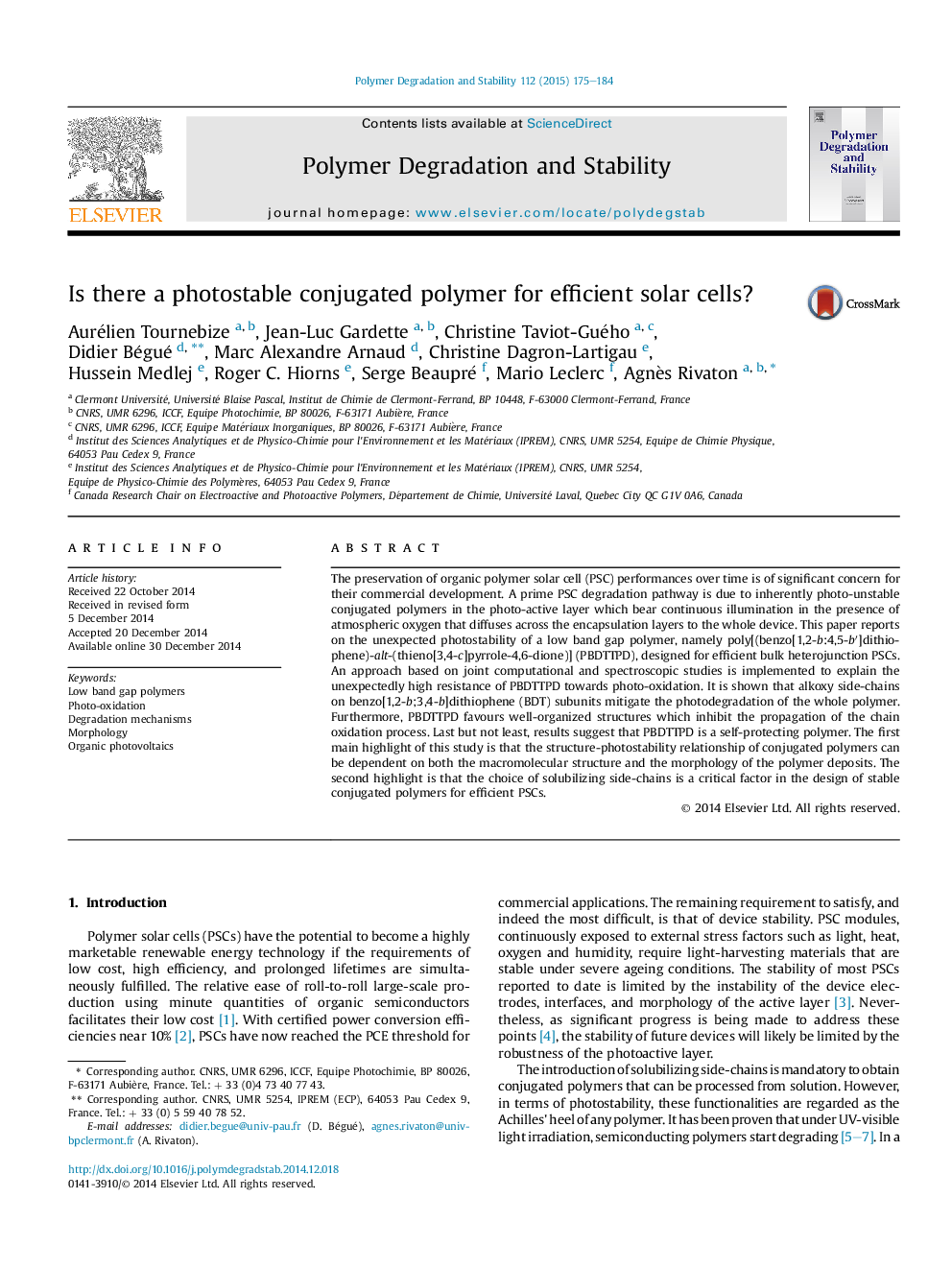| Article ID | Journal | Published Year | Pages | File Type |
|---|---|---|---|---|
| 5201532 | Polymer Degradation and Stability | 2015 | 10 Pages |
The preservation of organic polymer solar cell (PSC) performances over time is of significant concern for their commercial development. A prime PSC degradation pathway is due to inherently photo-unstable conjugated polymers in the photo-active layer which bear continuous illumination in the presence of atmospheric oxygen that diffuses across the encapsulation layers to the whole device. This paper reports on the unexpected photostability of a low band gap polymer, namely poly[(benzo[1,2-b:4,5-bâ²]dithiophene)-alt-(thieno[3,4-c]pyrrole-4,6-dione)] (PBDTTPD), designed for efficient bulk heterojunction PSCs. An approach based on joint computational and spectroscopic studies is implemented to explain the unexpectedly high resistance of PBDTTPD towards photo-oxidation. It is shown that alkoxy side-chains on benzo[1,2-b;3,4-b]dithiophene (BDT) subunits mitigate the photodegradation of the whole polymer. Furthermore, PBDTTPD favours well-organized structures which inhibit the propagation of the chain oxidation process. Last but not least, results suggest that PBDTTPD is a self-protecting polymer. The first main highlight of this study is that the structure-photostability relationship of conjugated polymers can be dependent on both the macromolecular structure and the morphology of the polymer deposits. The second highlight is that the choice of solubilizing side-chains is a critical factor in the design of stable conjugated polymers for efficient PSCs.
